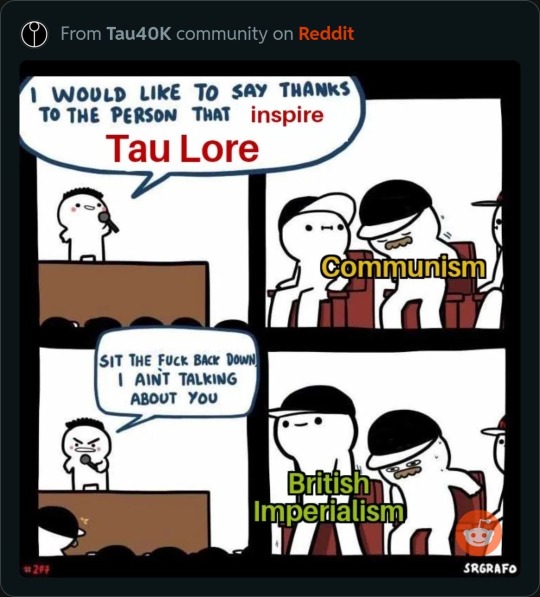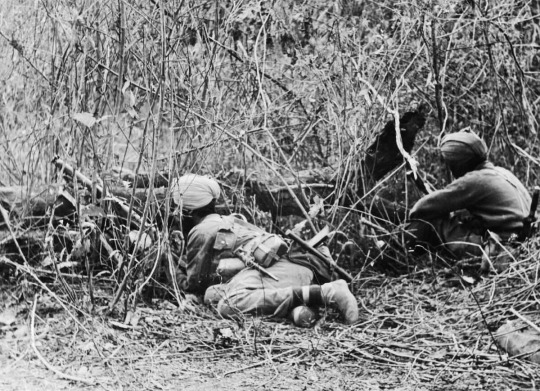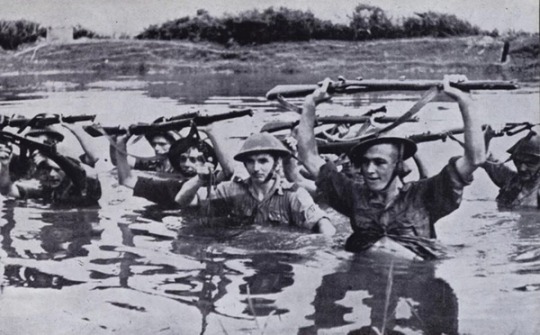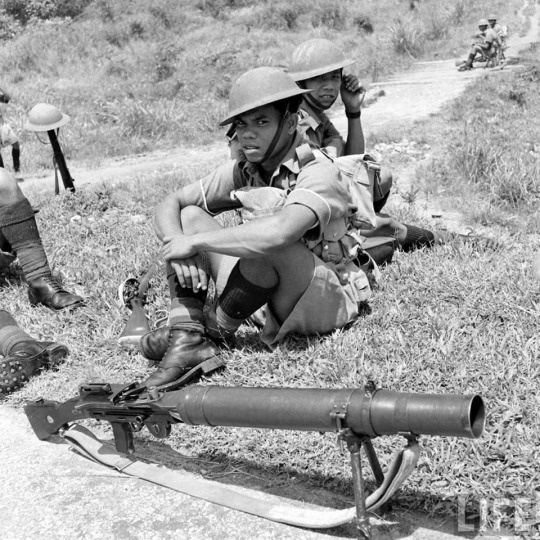#british empire in India
Explore tagged Tumblr posts
Text
If you want a piece of Indian history to be covered don't hesitate to send an ask or submission!
#hinduism#ancient indian history#sanatan dharma#hindublr#colonisation in india#mughal empire#british empire in India
5 notes
·
View notes
Text
am i allowed to be mad carmen sandiego used indian culture as a fucking aesthetic to then carry on and yap about THE BRITISH???? THE FUCKING COLONISERS OF THE SAME COUNTRY????? YOUVE GOT TO BE KIDDING ME RIGHT???? JULIA GOES 'oh the history... oh the architecture... sighs dreamily' WITH ZERO ELABORATION NOT ONLY ARE YOURE TELLING ME YOU CANT EVEN THINK OF ANYTHING TO SAY ABOUT THE CULTURE AND ARCHITECTURE AFTER MENTIONING IT. BUT YOU COULDNT THINK UP A SINGLE FUCKING THING OTHER THAN A BRITISH DOCUMENT FOR A VILE OPERATIVE TO STEAL. IN INDIA????. THE OH THE HISTORY OH THE ARCHITECTURE COUNTRY????? IN THE NO STEALING HISTORICAL PIECES SERIES?????? how classy
#not to mention how they completely skip over britains history of stealing cultural items coughcough i mean they have a whole museum about it#though i guess i kinda get why they did that...??? they wouldnt want a whole country to look bad or something...???#actually no lmao i dont get it#and honesty id be happier if they even talked about the british empire IN india??? but no?????#i am in my critical stage of insane about cs sorry gang#carmen sandiego#carmen sandiego 2019#carmen sandiego netflix
149 notes
·
View notes
Text
Why Gandhi is a piece of shit and you should hate him.
Mohandas Karamchand Gandhi has been established in our history as a "Mahatma" which means "great soul"
This man is anything but that.
He is EVERYWHERE. He's on our currency, he's revered as a hero who saved India, and we have a mandatory holiday on October 2nd in honor of him.
If you didn't know, now you're going to get to know why he was a horrible human being. Let's begin.
This man managed to fool people Martin Luther King and Nelson Mandela (among many others) into thinking he was a good person.
Here is some of the shit he's done:
In 1903, when Gandhi was in South Africa, he wrote that white people there should be "the predominating race." He also said black people "are troublesome, very dirty, and live like animals."
Refused to have sex with his wife for the last 38 years of their marriage. He felt that in order to test his commitment to celibacy, he would have beautiful young women (including his own great niece) lie next to him naked through the night. His wife, whom he described as looking like a "meek cow" was no longer desirable enough to be a solid test.
Believed that Indian women who were raped lost their value as a human.
During Gandhi's time as a dissident in South Africa, he discovered a male youth had been harassing two of his female followers. Gandhi responded by personally cutting the girls' hair off, to ensure the "sinner's eye" was "sterilised". Gandhi boasted of the incident in his writings, pushing the message to all Indians that women should carry responsibility for sexual attacks upon them.
He argued that fathers could be justified in killing daughters who had been sexually assaulted for the sake of family and community honour.
Gandhi also waged a war against contraceptives, labelling Indian women who used them as whores.
He believed menstruation was a "manifestation of the distortion of a woman's soul by her sexuality".
On 6th April 1947, he gave a speech where he said, “ If the Muslims are out there slicing through Hindu masses to wipe out the Hindu race, the Hindus should say nothing and peacefully accept death”.
He hated the great Hindu rulers, especially Shivaji Maharaj. To please the Muslims, he banned the book named ShivBhaavani which correctly depicted Islam’s intolerance and fierce fundamentalism spread by it.
Refused his wife life-saving medication (for religious reasons), but those religious reasons all of a sudden no longer applied to him when he was in a similar position.
Started a fast unto death when Ambedkar asked for separate electorates for Dalits.
Gandhi left his ailing father on his deathbed, to sleep with his wife. The child born out of this copulation died in infancy. According to Gandhi, the death of this infant was the result of this evil karma.
Gandhi, even when he claimed to be the angel of non-violence, made no efforts to prevent the British from deploying Indian troops at various locations during World War II.
Kashmir was invaded by Pakistan in 1947, the brutal Pakistani army committed heinous crimes against Kashmiri Pandits including mass rape and mass killings consequently many Pandits were forced to flee to Delhi and other places. In one incident Pandits took refuge in an abandoned mosque in Delhi. Infuriated, Gandhi threatened to fast to death if the Pandits didn't leave. The Pandits were slaughtered in a communal riot as soon as they abandoned the mosques.
Criticized the Jews for defending themselves against the Holocaust because he insisted that they should have committed public mass suicide in order to "shame" the Germans instead of fighting back. His exact words were, "But the Jews should have offered themselves to the butcher's knife. They should have thrown themselves into the sea from the cliffs. As it is, they succumbed anyway in their millions."
And this is all from a simple Internet search compiled here. I wonder what else is hiding if I do a deep dive.
Thank you for coming to my TED talk.
#hinduphobia#hindublr#desiblr#antisemitism#history#india#gandhi#can you guys tell i hate him#indian history#british empire#tw rape#tw assault
394 notes
·
View notes
Text

Marx would've been on the side of Palestine. Facts.
#united front#palestine#free palestine#karl marx#communism#marxism#india#british empire#israeli apartheid
187 notes
·
View notes
Text

Two cousins, both Emperors, in King Edward VII's funeral procession.
#King George V#Kaiser Wilhelm II#King Edward VII#London#1910#Emperor of India#House of Saxe-Cobourg & Gotha#WWI#British Empire#archival photo#world powers#monarchy#UK
53 notes
·
View notes
Video
Brothers Beyond The Seas by Reginald Mills by totallymystified Via Flickr: From The Boy’s Own Annual 1937-38.
#Reginald Mills#artist#illustrator#illustration#propaganda#The Boy's Own Paper#British Empire#Commonwealth#Newfoundland#Canada#India#South Africa#Australia#New Zealand#West Indies#colonialism#retro#vintage#nostalgia#1930s#thirties#flickr
20 notes
·
View notes
Text
my ancestors would be so disappointed if they knew im simping over british people.
#desi tag#desi#desi tumblr#the marauders#harry potter marauders#the marauders era#marauders era#marauders#marauders fandom#british empire#india#pakistan#bangladesh
51 notes
·
View notes
Text

#seriously#it’s British imperialism plus India’s caste system#there is Japanese influence too with spheres of expansion and the armor style#but it’s a British company first and foremost l#tau#t’au#tau empire#t’au empire#wh40k#wh40000
288 notes
·
View notes
Text

'Tea - an Empire Industry - where our tea comes from'
Poster showing a map of India and Ceylon (now Sri Lanka) with names of cities and illustrations (1937). Artwork by Leslie Macdonald Gill.
#vintage poster#vintage map#1930s#tea#india#ceylon#sri lanka#Leslie Macdonald Gill#british empire#maps#map
51 notes
·
View notes
Text



Officer's Uniform of the 3rd Bombay Light Cavalry from the British Empire dated to 1857 on display at the National Army Museum in London, England
This uniform belonged to Captain John Malcolmson who participated in the capture of the port of Buchire in December 1856. At Khoosh-ab, 8th February 1857, the largest battle of the Persian War (1856 - 1857), he won the Victoria Cross after his unit charged and broke a square of Persian infantry.
This conflict was due to the British and Russian Empires fighting for control over Persia, especially what is now modern day Afghanistan in what was called the Great Game. While Britain and Russia did not fight directly they caused conflicts in the region that led to the deaths of many of the people living there.
Photographs taken by myself 2024
#military history#art#uniform#fashion#cavalry#british empire#india#indian#persian war#19th century#victorian#national army museum#london#barbucomedie
7 notes
·
View notes
Text

Queen Victoria by George Baxter.
14 notes
·
View notes
Text
Others: If you were asked to write for the 5th Valkyria Chrinicles game, how would you write it?
Me: As a mixture of the Burma, New Guinea, and Borneo campaign.
Others: … What?
Me: Well, the Valkyria chronicles franchise has always liked toying with some degree of moral ambiguity, with an empire that is clearly in the wrong, but the side you are fighting for, while better, still has glaring flaws. Furthermore, the fourth game implied and talked about the idea that nations within the Federation has colonies, and while I am skeptical of how much of what the Imperial soldier stating that claim is stating established facts or state propaganda, that could be an angle to explore plot wise.
Think about it, perhaps the Empire launches a naval invasion to try and take over these resource rich colonies, and are banking on creating a narrative that they are liberators to the indigenous population, just like how the Japanese did during their initial pushes into Southeast Asia.
This could also mean a new perspective of what I shall dub for the sake of this post, the “Commonwealth”, who draws inspiration from mainly British colonial forces and Commonwealth, more specifically, Indian and Australian forces, with a heavy side of Gurkhas. Where you have to manage and combat this narrative, between members of your squad that are descendants of Edinburgh Federation settlers (Australians), indigenous peoples (Indians, Indonesians, Malaysians, and Nepali Gurkhas) and those actually from the Federation (British).
Not to mention, this could also be interesting to explore in the context of why they are siding with the Federation. Those actually from the Federation might view the conflict through the lens of ideology, and preserving the Empire Federation. Meanwhile the settlers might not care about the broader Federation, but they do care about their home being threatened. Finally those who are indigenous might have negative feelings about their current Colonial overlords, but be even more skeptical to the Imperial claims, or maybe even be exposed to the actual Imperial treatment that is far worse than anything the Federation have done.
And the Darscen can be explored in an interesting lens, as the Federation-native members might have the most amount of anti-Darscen soldiers, while settlers might still talk about them using offensive terms, but otherwise treats them better due to the need for the skill sets often associated with Darscens being particularly useful and valuable, while the indigenous members don’t have the context for the hate, and as far as they’re concerned, it’s someone else’s problem.
Gameplay-wise, the door is open to a lot of creativity. Jungle warfare can open the door to a lot of new mechanics and tactical situations. Maps could be very claustrophobic due to the thick jungle. Closer engagements could lead to having classes be more flexible, such as the inclusion of melee, bonus equipment like flares for the Scout class that helps to boost accuracy within the zone, or even new skills like engineers being able to build emplaced weapons.
Then there are the tanks. Tanks could play an interesting role, as tanks were used in far more limited numbers and roles compared to the European fronts, but I can easily see an interesting exploration in this world about smaller more compact tanks that function like anti-infantry roles, like how the Australians use Matilda tanks in the liberation of Borneo.
I could also see the dropping of the lancer class (iconic as it is), but the adoption of a new class that I would dub the “point man”, who would act as a mix of the scout and the shock class, having high movement range, but armed with more short ranged weapons like submachine guns and introducing shotguns to the series.
And the enemy can be interesting as well, with perhaps less use of the traditional image of the Imperial forces within the series, but instead more like naval troops and sailors and marines, perhaps their own colonial forces, and maybe even native people who side with the Imperials, deeming the Federation too irredeemable.
Finally, aesthetic. I think people are too obsessed with either the German, Soviet and/or American WWII aesthetic, but I personally find British commonwealth and colonial forces too be an awesome aesthetic, and also because I believe people often overlook the actions and achievements of British imperial forces.
Personally, I think people might be intrigued with playing characters inspired and based off Sikh, Malay, Gurkhas, Australians, and even British forces. Slouches hats, Bren guns, Owen guns, and Kukri knives, honestly it would be cool to see and use.
Besides, what could be cooler than siccing a fantasy world equivalent of a Gurkha or Aussie on an unsuspecting Imperial?
Others:… Go back to having the shower thoughts be about Genshin.






Images from top left, clockwise: Australians during the Borneo campaign; Gurkha, unknown location; British soldiers crossing a river during the Burma campaign; Australian Matilda Tanks during the Borneo Campaign; Soldier of the Malay Regiment; Indian Sikh soldiers, Burma campaign
#history#world building#valkyria chronicles#world war second#world war ii#wwii#wwii era#british empire#Australia#India#burma#Burma campaign#Borneo campaign#borneo#Gurkha#2 AIF#Matilda tanks#british army#indian army#australian imperial force#malaysia#Malay regiment#long post#long reads#shower thinking#shower thoughts#world war 2 aesthetic#history aesthetic#aesthetic
7 notes
·
View notes
Text
reading about the history of the tin mines in sungai ujong and malay (esp minangkabau) peasant and chinese labourer resistance to british colonial rule in what is now negeri sembilan and how the malay ruling class weaponized communalism - ie. the classic "malay ethnic solidarity vs chinese and indians" in opposition to class solidarity - in order to get the malay peasantry to stop fighting british colonial rule and help the malay nobility profit from british imperial rule, to the detriment of the class interests of the majority of malays as well as those of chinese and indians in the region. tale as old as time
#thats literally what happens to this day. sad as hell#my family is from negeri sembilan and was brought over in the late 1800s as labourers on the rubber plantations there so this is all like#important history to me lol#to be clear this approach is not unique to NS its the colonial approach across msia and the former british empire in general#they did this in india all over as well
42 notes
·
View notes
Text

Happy Victoria Day to all my friends & followers in the Anglosphere!
#Queen Victoria#British Empire#Commonwealth#monarchy#House of Hanover#Empress of India#Victoria Day#Canada#national holiday#fireworks#royal portraits#UK#Great Britain
39 notes
·
View notes
Text
[C]elebrated Victorian travel writer[s] [...] recounted the wilful behaviour of these captive animals [...] [in] a growing corpus of travel writings attempting to capture and relay the sites and scenes of the colony for a wider British audience. [...] [A] range of colonial-era writings - including veterinary texts, memoirs, diaries, fiction and travel writings - [...] [demonstrates] the entangled histories of elephants working in Burma's timber trade [...] [and] trace[s] the development of imperial knowledge about the Asian elephant [...]. The specific configuration of animal agency within the [British imperial] timber trade was a prerequisite factor for the generation of scientific knowledge about elephants. [...]
Teak operations in British Burma during the second half of the nineteenth century had resulted in the decimation of easily accessible forests. Timber firms now had to push their operations into more remote regions of the colony. This necessitated capital-intensive operations involving the purchase of elephants whose labour made possible the logging and transport of this harder-to-reach teak. By the period between 1919 and 1924, elephants represented the largest assets owned by the biggest timber firm operating in the colony [...]. This animal capital, of around three thousand creatures, represented between five and six million rupees annually, the equivalent of roughly a third of the corporation's liabilities. [...]
And these elephants must have been busy. This five-year period saw half a million tons of teak exported out of the colony, the overwhelming majority of which was exported by a handful of large British-owned firms. Their ownership of these beasts of burden gave imperial trading firms a considerable advantage over smaller-scale Burmese outfits and, according to some, over the government of Burma. [...] [T]his expanding and increasingly monopolized animal workforce, mostly employed in camps located in the colony's borders with Siam and Assam, brought unprecedented numbers of Asian elephants into the purview of the colonial scientific gaze. It made colonial Burma an important site for the study of elephants. [...]
---
Within the camps the ‘crush’ was the principal site for exacting discipline. The crush was a wooden structure [...]. Efforts to escape would tire and demoralize the animal, who would have been weakened through deliberate starvation. [...] Supplementing these physical impediments were pharmacological restraints. Opium was used to make elephants more amenable to human direction, particularly to tranquilize elephants for medical interventions. [...] These disciplinary techniques produced knowledge of individual elephants and their characters. Descriptive rolls were maintained providing the physical details of each elephant, giving information on its origins, listing any ailments and recording any misdemeanours, especially episodes of violence.
These documents were held by European supervisors employed by the timber firms to oversee operations. They were used to monitor the Burmese staff too, [...] reinforcing the imperial racial hierarchy in the everyday routines of the camps. The self-serving idea of the white officer protecting the elephants from indigenous cruelty was repeated throughout the early twentieth century. [...]
---
The contingent way that elephants’ bodies changed in the camps mattered for the generation of scientific knowledge. The question of how long elephants could live, and the difficulties of judging an elephant's age, demonstrate this point. [...] The sportsman Fitzwilliam Pollok claimed to have never found the remains of an elephant that had died of natural causes in all of his travels in the colony. This apocryphal but famed longevity stood in contrast to their lifespans in the camps, where elephants over the age of forty were considered elderly [...]. Imperial elephant knowledge was based upon these camp-conditioned bodies [...]. The elephant camps and timber yards were sites that enabled imperial authors to make their studies.
The development of a vaccine against anthrax in elephants illustrates the global significance of the colony's industry in contributing to scientific knowledge. [...] The outcome of these discussions, in 1928, was the employment of a veterinary research officer paid by both the state and the big timber firms. Revealing the wider imperial networks at play in this process, it was determined swiftly after establishing this agreement that the research officer should be a South African. This reflected the status that this settler colony had acquired for expertise in veterinary medicine within the British Empire by the interwar years, particularly for diseases affecting livestock, such as anthrax. [...]
---
Elephants in colonial Burma's teak industry were vital actors, in both senses of the word 'vital'. [...] The agency of imperial corporations to exploit Burma's resources was the effect of relationships between humans and elephants, and other animals. [...] Racial hierarchies and divisions of labour segmented the human workers. [...] Scientific knowledge of animals was not innocent of the structural position of a species in the empire. Certain creatures became available to imperial researchers through the specific relationships engendered by imperial expansion.
---
All text above by: Jonathan Saha. "Colonizing elephants: animal agency, undead capital and imperial science in British Burma". BJHS Themes, 2017 (2), 169-189. Published online: 24 April 2017. At: doi dot org slash 10.10016/bjt dot 2017.6. BJHS Themes is a companion journal of the British Journal for the History of Science. [Bold emphasis and some paragraph breaks/contractions added by me. Presented here for commentary, teaching, criticism purposes.]
#multispecies#ecologies#tidalectics#geographic imaginaries#indigenous#abolition#ecology#elephants and tigers#british in india#indigenous pedagogies#black methodologies#agents of empire#pleistocene#plantationocene and anthropocene
18 notes
·
View notes

